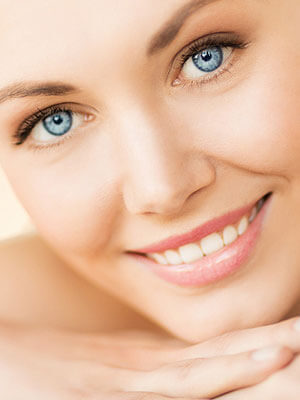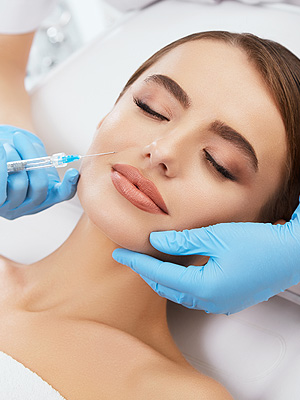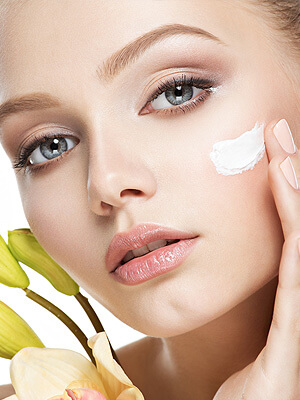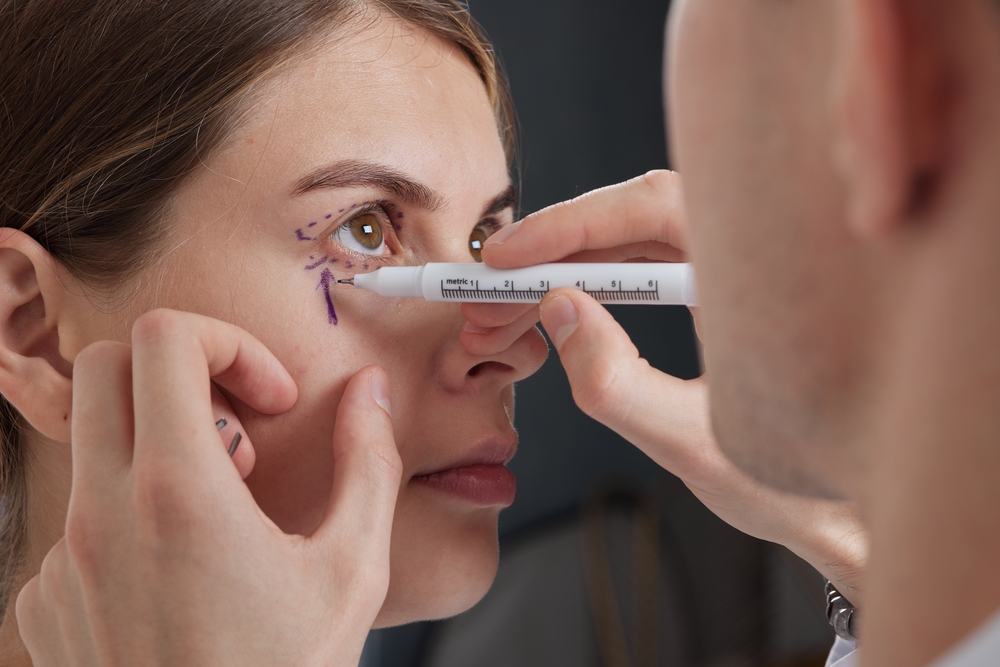
Eyelid surgery, or blepharoplasty, is a minimally invasive cosmetic procedure that can rejuvenate the appearance of your eyes. It can be performed on the upper eyelids, lower eyelids, or both.
Recovery from the procedure doesn’t take too long, and since it’s usually performed as an outpatient procedure, you can go home the same day. One concern some people have when having eyelid surgery is bruising and swelling.
During your recovery, the area around your eyes will be bruised and swollen for a little while as you heal from the operation. However, there are ways to reduce bruising after the procedure and even accelerate the healing process.
Keep reading to learn how to reduce bruising after lower eyelid surgery!
What is Lower Eyelid Blepharoplasty?
Blepharoplasty for the lower eyelids is used to reduce the appearance of bags under the eyes. Drooping lower eyelids are very common in older adults as skin loses elasticity as you get older.
While drooping upper eyelids can make your eyes appear hooded and even get in the way of your vision, sagging lower eyelids create bags. While normal, these bags may make you feel like you look tired or older than you are.
Blepharoplasty can give you a fresher, more energetic appearance by getting rid of bags under the eyes. When you have lower eyelid blepharoplasty, your eye surgeon will tighten up your lower eyelids by removing excess tissue and restoring your lower eyelid to its proper position.
This is done with small incisions that are hidden, so you won’t be able to see them after you’re healed. This simple operation can give you a smoother, more youthful appearance.
However, there is a short recovery period before you can experience the full results of the procedure.
Will I Bruise During Recovery From Eyelid Surgery?
In most cases, bruising forms within the first day after having a lower blepharoplasty. It usually begins red and then becomes darker, turning purple forty-eight to seventy-two hours after the procedure.
During this period, the bruising tends to be most prominent. At five to ten days after the procedure, the bruising begins to fade and usually fades completely after fourteen days.
After fourteen days, when bruising and swelling have gone completely down, you’ll then see the results of the procedure. You can make the whole recovery process more comfortable and reduce the severity of the bruising by simply following these tips:
Use a Cold Compress
A cold compress over the eyes helps with both bruising and swelling. Your blepharoplasty surgeon will be able to tell you just how often it is safe to use a cold compress after surgery and will also recommend what kind of compress to use.
The more diligent you are using the compress exactly as recommended, the more effective it will be in reducing bruising as well as soreness after surgery.
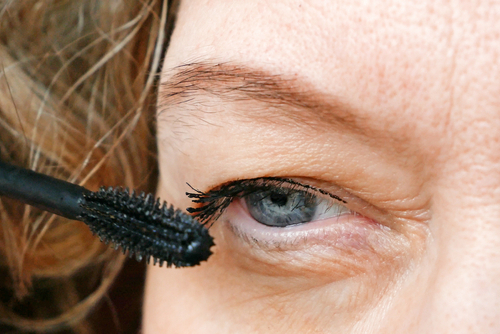
Sleep With Your Head Elevated
Keeping your head elevated helps blood drain away from the bruises around your eyes. It also reduces swelling.
To keep your head elevated when asleep, you can either sleep on a reclining chair or your back in bed with your head propped up by pillows.
Use Sunglasses
Sun exposure and even wind exposure can affect the healing process. Wearing proper sunglasses outside, particularly wrap-around glasses that also protect against wind, can help your eyes heal.
Drink Plenty of Water
Drinking water aids in the healing process and reduces swelling by helping your body process excess fluids. Also, you can avoid eating or drinking food and beverages with high salt content, as salt makes your body retain more fluid.
Follow Your Eye Doctors Instructions
When you follow both your eye doctor’s instructions for recovery and use these tips, you should be able to significantly reduce bruising after your lower eyelid surgery. However, it’s always best to always ask your eye doctor how you can best increase your chances of a smooth recovery as well as reduce bruising.
Use Lid Lift Goggles
You can buy special goggles designed to aid in healing from eyelid surgery. These goggles work by placing a light pressure on the eyelids to reduce swelling and bruising.
When worn most of the time, both when you’re sleeping and awake, during the first 48 to 72 hours after surgery, they’ve been shown to provide faster healing and reduced bruising. Patients who use these goggles tend to look like they’re a whole week out of surgery after only a few days.
Using the goggles is a great way to get through the dark, purple bruising phase of recovery faster!
How Do I Know if I am a Candidate for Lower Eyelid Blepharoplasty?
The best way to find out whether or not you might be a good candidate for blepharoplasty is to visit your eye doctor at Revive MedSpa for a consultation. At this appointment they will weigh various factors to determine if you are a candidate for lower eyelid blepharoplasty, such as:
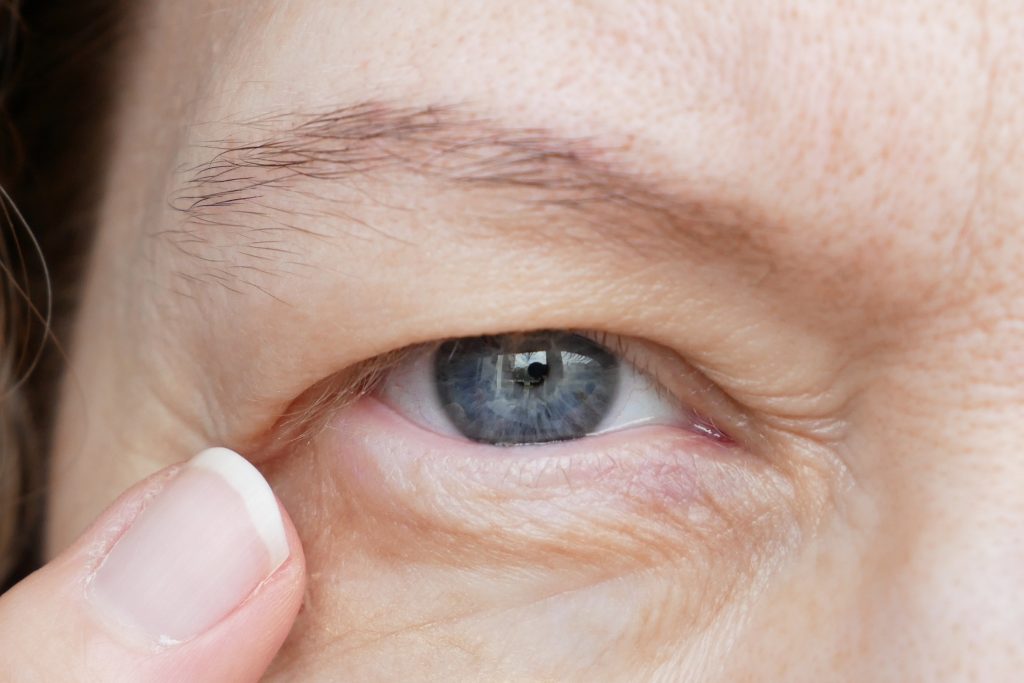
- Excess skin or bags under the eyes that create a tired or aged appearance.
- Puffiness or sagging skin that is not alleviated by rest or lifestyle change
- Good overall health without any medical conditions that could impair healing
- Realistic expectations about the procedure’s outcomes.
- Non-smoker or willing to quit smoking before and after the surgery
- No serious eye conditions that could be exacerbated by the surgery
It is essential to consult with a qualified plastic surgeon who can assess your individual needs and determine if lower eyelid blepharoplasty is the best option for you. They will evaluate your facial anatomy, skin quality, and the extent of the issues you wish to address.
Ultimately, the decision to undergo the procedure should be made after careful consideration and discussion with your eye surgeon.
Do you want to learn more about blepharoplasty? Schedule a consultation at Revive MedSpa, today!

